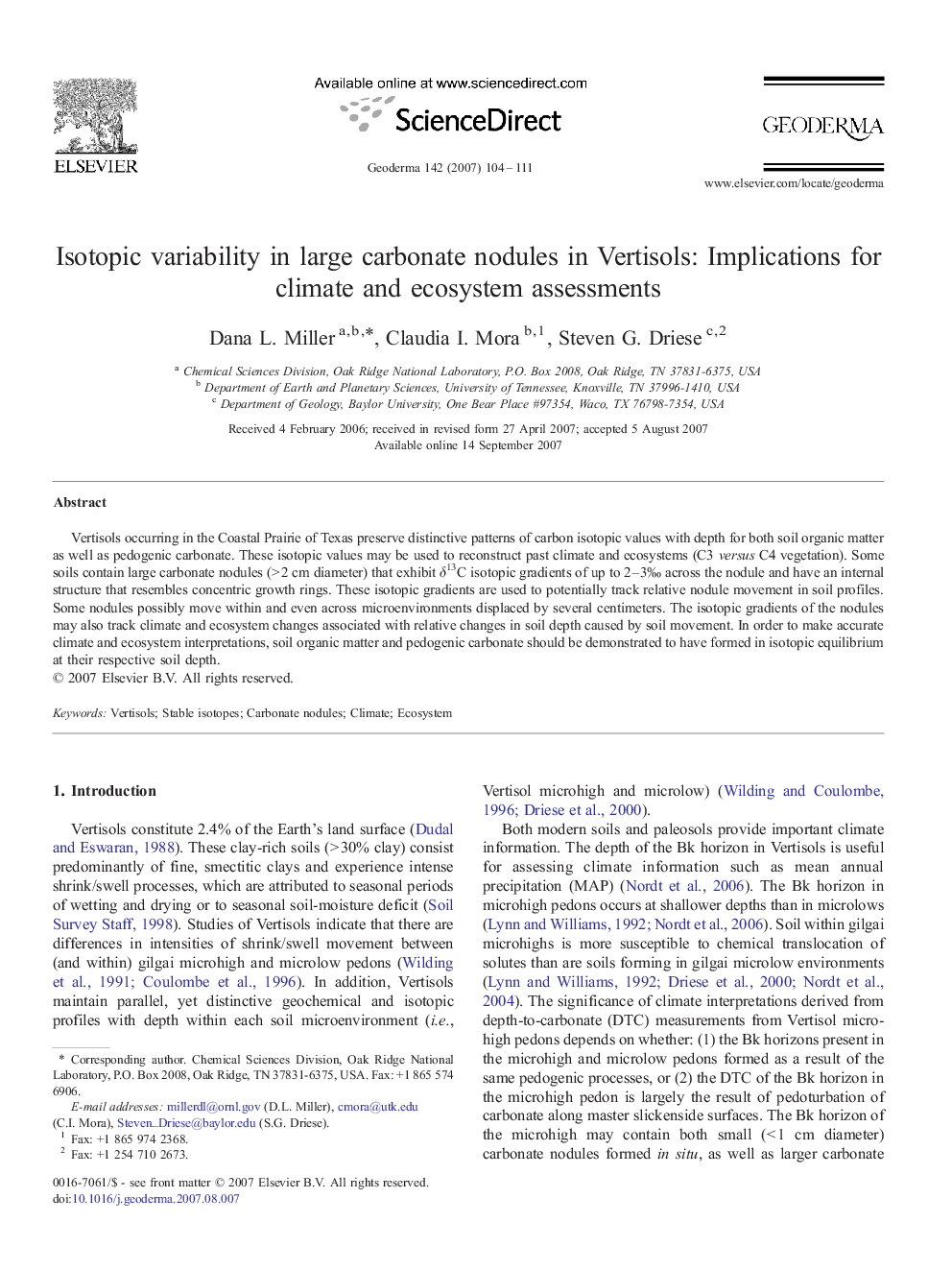| Article ID | Journal | Published Year | Pages | File Type |
|---|---|---|---|---|
| 4575301 | Geoderma | 2007 | 8 Pages |
Vertisols occurring in the Coastal Prairie of Texas preserve distinctive patterns of carbon isotopic values with depth for both soil organic matter as well as pedogenic carbonate. These isotopic values may be used to reconstruct past climate and ecosystems (C3 versus C4 vegetation). Some soils contain large carbonate nodules (> 2 cm diameter) that exhibit δ13C isotopic gradients of up to 2–3‰ across the nodule and have an internal structure that resembles concentric growth rings. These isotopic gradients are used to potentially track relative nodule movement in soil profiles. Some nodules possibly move within and even across microenvironments displaced by several centimeters. The isotopic gradients of the nodules may also track climate and ecosystem changes associated with relative changes in soil depth caused by soil movement. In order to make accurate climate and ecosystem interpretations, soil organic matter and pedogenic carbonate should be demonstrated to have formed in isotopic equilibrium at their respective soil depth.
